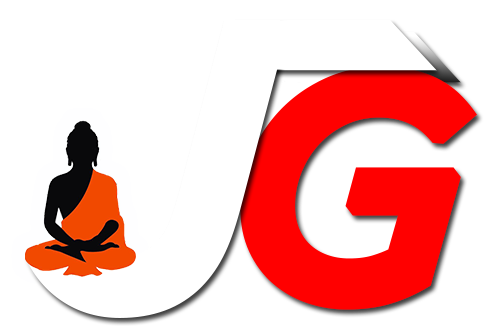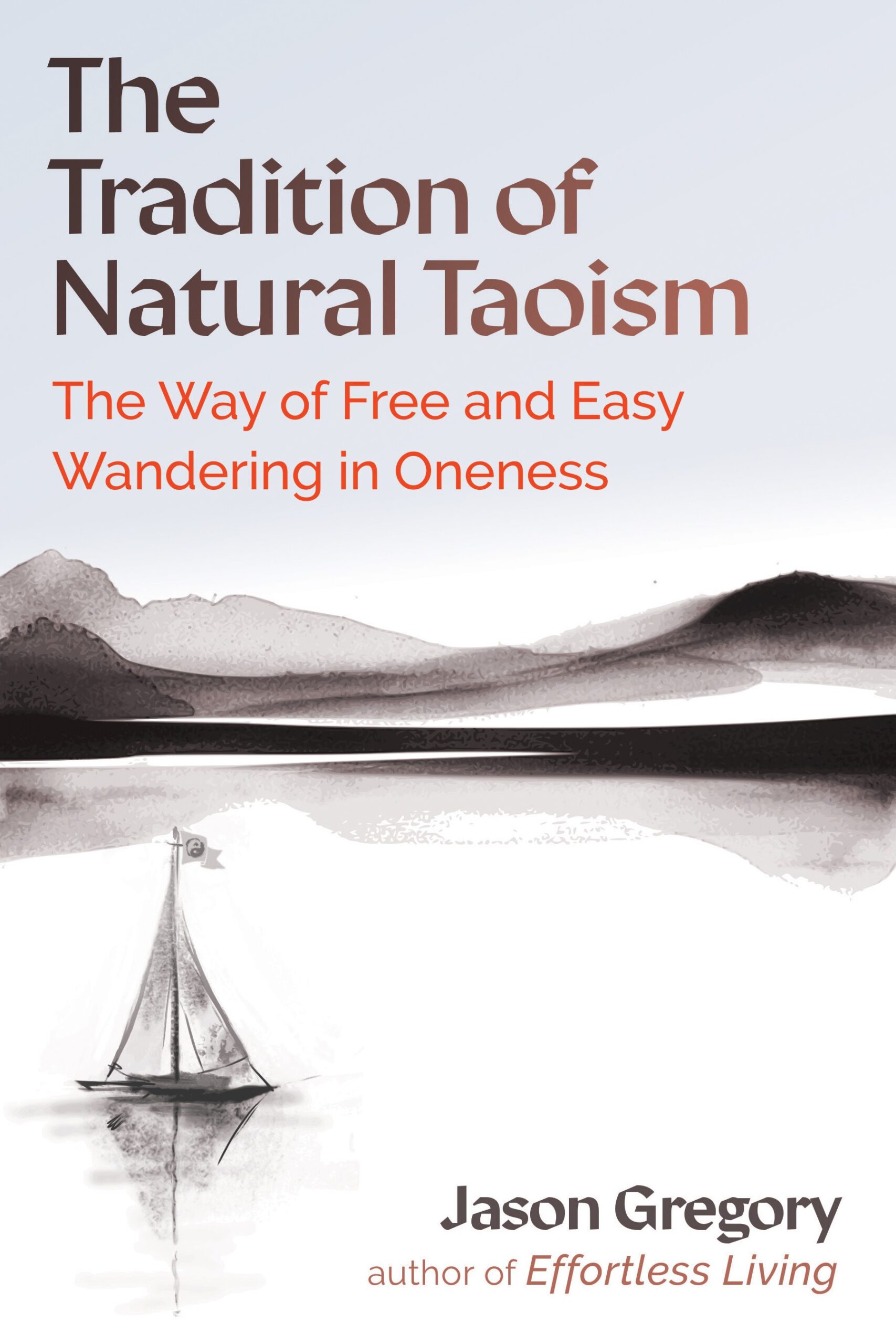Go Beyond Everything (Turiya)

Go Beyond Everything (Turiya) In the great Eastern spiritual traditions there is a special importance given to going beyond everything, essentially going beyond the world and even your own mind. This is the spiritual ideal of the great sages and teachings of the East. But this ultimate goal is something that frightens most people because they are not willing to truly give up their sense of “self.” People who become interested in spirituality forget this ideal. Sadly, people often subtly use spirituality to propagate their ego rather than dissolve it. This is especially rife in the West. The individualistic mind of the West has taken the holistic philosophies and practices of the East and turned them into something geared more towards self-interest and vanity rather than the dissolution of self, humility, and simplicity. To counter such widespread cultural appropriation, we need to understand what going beyond everything means and how and why we should really be aiming for those lofty heights previously only experienced by the great sages of antiquity. The Foundation of Consciousness Going beyond everything means you’ve come into resonance with the underlying witness of all life. This witness is the pure awareness at the core of our being that we cover over with worldly experiences, mundane concerns, and individual conditioning. This witness is not overly considered in Western religions, but it is the spiritual ideal of the East. The goal is to firmly re-establish yourself in this pure awareness which is untouched by all experience. So, the focus of this goal is not about the “experience,” but instead the experiencer. The pure witness (experiencer) of all internal and external movement. This witness resides in all experiences, no matter whether the experience is pleasurable or painful. The witness is a permanent feature of consciousness and is actually the foundation of consciousness. The surprising thing is not many people in science or Western religions focused a lot of attention on the witness and this might be an unintentional oversight considering that if you are not a deep explorer of your own consciousness then the experiencer will be overlooked in favor of the actual experience. Undifferentiated Consciousness Thankfully the great Eastern spiritual traditions revealed that the pure awareness of our being is the essence of consciousness. Yet each tradition explained this a little differently. In Vedanta to remain as the Atman, the undifferentiated consciousness, the Self with a capital S, means to abide in that witness state without letting the turbulence of worldly experience shake you. In Samkhya and classical Yoga, the more you reside in pure awareness, Purusha, you will begin to separate from all the movement of energy in the universe and mind, Prakrti. You develop an actual gap, where Purusha can look upon Prakrti without being affected by its gravitational pull. In Buddhism we have Tathata, a word which refers to someone who has arrived at suchness or thusness. This is the Buddha mind that has recognized the utter impermanence of the world and, as a result, their sense of self has thinned away into Sunyata, the voidness of the universe where suchness is revealed. This is the Buddha’s immovable state symbolized in the Bhumisparsha mudra. And lastly, in Taoism there is the Absolute Tao that animates all life through the yin and yang energies of the universe. The great Taoist sages Lao-tzu and Chuang-tzu explain how we can absorb our mind in Tao by emptying our mind and allowing life to be as it will without our individual interference. By following this process, you begin to merge with the Tao. Unassociated Bliss So, the common theme among all these great traditions is we should empty our faculties and instead of pursuing experience after experience, we should abide steadfast as the pure witness, the undifferentiated consciousness. And the promise of all the traditions is that abiding in pure awareness is actually the true key to happiness. Actually, they would say it leads to unassociated bliss, Ananda in Sanskrit. We’re often going from one experience to another trying to fill this emptiness we all feel inside, but it never leads to lasting happiness. The irony is ananda is not found in experience, but rather in dissolving the one who continually chases experiences. When we abide as the witness more and more and are not influenced by the activity of our mind, then we are in a state of bliss from not being a “person.” This is the advanced spirituality which is part of the higher religion of the East. This sort of knowledge is what separates Eastern spirituality from Western religions. Too often these days people think there is a radical universalism existing among all religions. What we have to understand is that all religions have their place, but they are not equally efficacious. There are some similarities but they are somewhat loosely connected when we study each tradition. Eastern spirituality is far more transformative and peace bearing because the whole ethos of the Eastern traditions is based on the study of consciousness to discover the nature of mind and the universe. And they’ve done a damn good job at explaining all of that and more. Turning Away from Worldliness Most importantly, they’ve given us the key to true knowledge of our nature. But this knowledge requires us to go beyond everything to experience our innate bliss. We have to turn our back on worldliness. This means we have to turn our back on worldly desires and any ambition we may have of becoming “someone.” This does not mean being apathetic because it is actually our personal agendas and individual conditioning which causes all the trouble in the world, so we seek to dissolve all that subjectivity to see the world from an objective viewpoint. Instead of indulging in the “I”-thought, we need to ask who is the experiencer of thoughts? Does the experiencer feel pain or pleasure? The
The Nature of Siddhis in the East
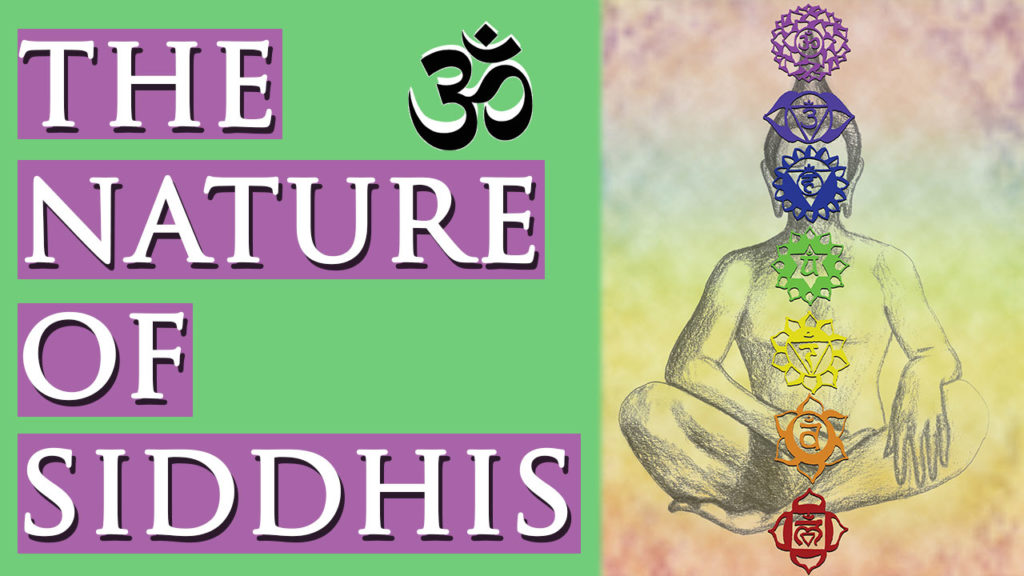
The Nature of Siddhis in the East The word siddhi is a Sanskrit noun which means attainment, accomplishment, perfection, power, realization, or success, in the sense of liberation or attaining magical powers. Siddhis are the magical powers or paranormal abilities attained through rigorous spiritual practice. In the Hindu sect of Shaivism they define siddhis as the “Extraordinary powers of the soul, developed through consistent meditation and often uncomfortable and grueling tapas, or awakened naturally through spiritual maturity and yogic sadhana.” (Tapas in Sanskrit means asceticism and sadhana in Sanskrit means spiritual exertion towards an intended goal). The modern day students of yoga and spirituality often dismiss siddhis and are naturally skeptical when it comes to this magical dimension. And I would say it is healthy to show some skepticism because there are many charlatans and fake gurus and yogis who depend on people believing they have paranormal abilities. But even though it is sane to be skeptical of such people, I am going to give the subject of siddhis an honest an open hearing based on the knowledge available. And, between Hinduism, Buddhism, and Jainism, there is a ton of information and texts about siddhis going back thousands of years. We also need to remember that the founder of classical yoga Patanjali dedicated a whole chapter to siddhis in the Yoga Sutras. The Nature of Siddhis This strong siddhi component in India and other parts of Asia originates from the archaic tradition of asceticism (tapas) and also Tantra, especially the hatha yoga element of Tantra. For thousands of years we’ve heard of world-renouncing yogins and sadhus who have attained access to this magical dimension. But keep in mind, Tantrism is concerned with siddhis both in the sense of ultimate liberation and also magical powers. Tantra affirms the phenomenal world and has a positive relationship with cultivating the innate psychospiritual potential within the body-mind system. Vedanta, on the other hand, dismisses siddhis for their own reasons which I will discuss shortly. Tantra regards siddhis as an advantage which allows us to reach our spiritual goals more fully. But, as with most things, there are two sides to each coin. For example, many practitioners of Tantra (tantrikas) will use these powers for less noble goals. Actually, there are whole texts composed to deal with these unsavory practices. And you still find tantrikas following this less noble path in India today. This less noble path is referred to as “lower Tantrism.” While, on the other hand, higher Tantrism is motivated by spiritual liberation and the spiritual upliftment of all beings, not just humans but also nonhuman beings. In the end, Tantric scriptures are focused on the higher element of liberation. Yoga and Tantra scriptures often mention siddhis as part of an accomplished adepts arsenal of skills. The relatively unknown text called the Yoga Bija states: “The yogin is endowed with unthinkable powers. He who has conquered the senses can, by his own will, assume various shapes and make them vanish.” The Yogashikha Upanishad also explains that siddhis are the mark of a true yoga adept. As a result, siddhis, according to the Yogashikha Upanishad, are encountered in the course of one’s own spiritual practice in the same way that a pilgrim passes by sacred spots on the way to the sacred city of Varanasi in India. The Yogashikha Upanishad also distinguishes two fundamental types of siddhis. First, the artificial which is called kalpita in Sanskrit. The second type is the nonartifical which is called akalpita in Sanskrit and means spontaneously arising. The artificial siddhis are produced by means of herbal concoctions, magic, mantra recitations, rituals, and alchemical elixirs. While the nonartificial spontaneous abilities spring from self-reliance. This natural spontaneous ability is thought to be pleasing to Ishvara. (Ishvara can mean God, the lord, a personal god, or the ultimate reality which is equal to the concept Brahman.) It is believed that these nonartificial spontaneous siddhis manifest in those who are free from desire. In the third chapter of the Yoga Sutras, Patanjali explains a long list of siddhis. This chapter is called the Vibhuti Pada. Vibhuti means manifestation or incarnation of powers and it probably stems from the Bhagavad Gita because it mentions Krishna’s far-flung powers. It is believed that a fully realized adept has access to these divine powers. She or he is known as a mahasiddha, which means great adept. These great adepts enjoy what is known as the mahasiddhis, which means great powers. In the Yoga Bhashya it refers to these great powers, commonly known in Hinduism as the Astha Siddhi, the eight great perfections. The Nine Great Powers There are actually nine great powers mentioned among various schools of thought. The first is Anima, which means miniaturization. This is the ability to reduce one’s size to the size of an atom. The second great power is Mahima, which means magnification. This is the ability to expand to an infinitely large size. It is believed you can become as large as a mountain, city, continent, and so on. But in the Mani Prabha text it defines Mahima as “pervasiveness.” This means it is not the physical body that expands but rather the subtle body or mind. The third great siddhi is known as Garima, which means becoming infinitely heavy. The fourth great power is Laghima, which means weightlessness or levitation. We are all familiar with the famous idea of levitating yogins. The fifth great power is Prapti, which means extension. This is the ability to be anywhere anytime according to your will. It is the ability to bridge great distances. This could be related to teleportation. The Yoga Bhashya seriously suggests a great adept can touch the moon with their fingertips if they have access to this power. The sixth great power is Prakamya, which means irresistible will. This is the ability to use your will as freely as you like. You can apparently realize whatever you desire. The Yoga Bhashya explains that
Yugas: The Hindu Map of Time
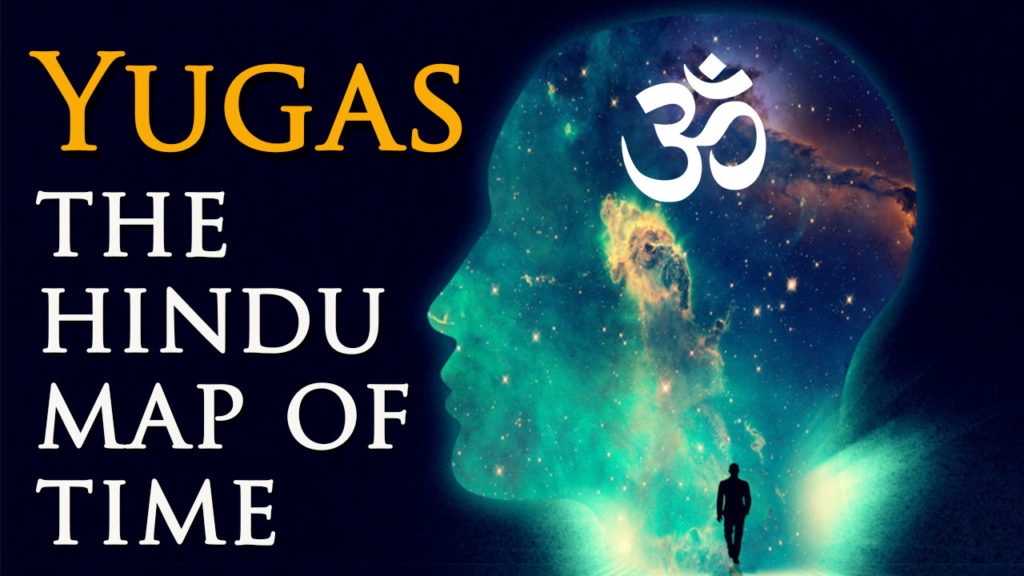
Yugas: The Hindu Map of Time The Eastern view of time is completely different to the Western view. A perfect example of this is the Hindu time system called the Yugas. The word yuga in Sanskrit means age, cycle, or world era. The yugas are a complex world-age doctrine of four ages. The yugas map the cycles of change within the universe and consciousness. The yugas build a solid framework for understanding how we experience time and eternity, and how they are related to one another. This way of thinking is completely different to the view of time and eternity held firm by Western religions and the West in general. The Western view of time is linear and this effect’s the Western view of eternity, as the idea of an eternal “heaven” becomes something we have to wait for until after death. This Western concept implies that eternity is bound to time. This is ridiculous considering eternity can only be ever-present in this very moment and can only be experienced when limiting thoughts and thinking have completely ceased. The Eastern view of eternity illustrates that eternity can be nowhere else but in this present moment, and a lot of their time systems and philosophies are based on it. As a result, the relationship between time and eternity is thought of very differently in the East, especially in the yuga system. Many Eastern traditions don’t map time in the linear sense, but instead, they designed systems to understand time’s nonlinear qualities in relation to matter, mind, and spirit. In Hinduism, the nonlinearity of time is broken into the yuga cycles, which map the consciousness that drives the process of linear time fueling human civilization. Kalpa There are two yuga systems that are somewhat similar, but also a lot different. There is an ancient long-count system and a more recent short-count system. Both systems are based on the concept of kalpa. Kalpa is a Sanskrit word that means aeon in Hindu and Buddhist cosmology. A kalpa equals 4.32 billion years. This massive period of time is not about lifetimes or an age, but rather the life of Earth. The concept of kalpa is described in the ancient texts of the Puranas, especially the Vishnu Purana and Bhagavata Purana. One kalpa of 4.32 billion years is regarded as a day of Brahma. If you think this is a long time, a mahakalpa consists of 100 years of Brahma which is 313, 528, 320, 000, 000 years. The Long-count Yuga System In the long-count system one kalpa is made up of one hundred mahayugas (great yugas). The duration of a mahayuga is built on a system of four yugas. These yugas are Satya Yuga, which is the ideal or truthful age spanning 1,728,000 years. Next is Treta Yuga, which is the age where virtue has declined by a quarter of Satya Yuga. Treta Yuga spans 1,296,000 years. Treta Yuga is followed by Dvapara Yuga. Dvapara Yuga is the age where virtue is reduced by half of what it was in Satya Yuga. Dvapara Yuga spans 864,000 years. The last yuga, and we could say definitely the least, is Kali Yuga. Kali Yuga is where virtue is reduced to a quarter. Thankfully in the greater scheme of things, Kali Yuga only spans the time of 432,000 years. Well, I know it’s still a long time, but in the universal sense it’s quite small. According to the long-count system what yuga are we in right now? It is commonly believed we are in the heart of Kali Yuga. According to the dates suggested by authorities, we might only be at the beginning of this yuga. It is believed that the dark age of the Kali Yuga commenced with the death of the Godly sage Krishna after the famous battle in Kurukshetra, documented in the Mahabharata epic. Traditional Hindu authorities put this date at 3102 BCE. Though many scholars dispute this date, as they believe a date of around 1500 BCE is more probable. Nevertheless, if we are to take the yuga world-age doctrine seriously, we are only at the beginning of the Kali Yuga. We’ve been on this long descent from the golden age of the Satya Yuga until now. This slow process spanning millions of years stupefied our mind into the characteristic of Kali Yuga. The Character of the Kali Yuga What is the characteristic of the Kali Yuga? The core characteristic is our minds identification with the external world and a turning away from the inner world. This is where we focus on everything in the outside world and forget about the inner world. We focus on how we look, our anxiety about how we are perceived by others, our reliance on sensory needs, our dependency on relationships, our over attachment to people and material possessions, and our focus on acquiring assets to promote our own self-interest. The Kali Yuga, then, is basically the involution of the human mind into gross matter, which means our mind is entangled with the outside world. Materialism, then, is the heart of the Kali Yuga. The minds tendency in this age is geared towards consumerist thinking. Consumerism becomes the accepted way of life in this age. And it is hard to argue with this ancient view of the Kali Yuga when we look outside and see what mainly drives people. The lowest point of the Kali Yuga might be technological transhumanism, as many people would rather be a robot and live forever than a natural human. The integration of mind into technology will likely be the lowest point of the Kali Yuga, if it happens. This technological motivation is the Kali Yuga belief that the material universe is everything. As a result, the inner world of consciousness is not considered valuable without the material world. This type of thinking is one of the greatest threats to the survival of human race. So before you play unconsciously with your phone, ask yourself what that habit is doing to you and how is it training your mind to be. I find
Understanding Flow – Part 3 Intelligent Spontaneity

Understanding Flow – Part 3 Intelligent Spontaneity The story of Cook Ting is about how we effectively move through the world with skill and not feel resistance. Reaching your optimal potential is also the same, meaning you attain expert skill in your desired craft and that extends into life in general. This feeling of effortlessness, or flow and wu-wei, is a state of psychological ease we feel through our whole body. The goal of wu-wei, then, is to effectively move smoothly through all aspects of your life, where even unexpected events in your life are dealt with spontaneously with intelligence. No obstacle is too big or even really perceived as an obstacle anymore. In a state of wu-wei you don’t press up against obstacles, but instead you act in the same fashion as the gentle key trying to open the door, which means you may absorb the pressure of an obstacle but because you don’t resist it you overcome it without forcing the outcome. This absorb and action technique is one of the foundational pillars of traditional martial arts. Modern martial artists, especially mixed martial artists, often use the word flow. It is used when someone appears to be very lucid and in the zone. Yet, as I mentioned, common understandings of the concept flow are at a novice level and this goes for a lot martial artists. The spontaneous nature expressed through us in a state of wu-wei is the deeper and more powerful raw material of our hot cognition functioning optimally. When there is no interference from the over-analytical cold system, you express the spontaneity of human nature intelligently. Intelligent spontaneity, then, is a fully embodied state of mind where one is perfectly calibrated to the environment. The environment essentially becomes an extension of your skill. For example, when you are in a state of intelligent spontaneity in martial arts you are perfectly calibrated to the obstacles you face with an opponent. The opponent will try everything to land a blow but you see it almost in slow motion, like Neo in the Matrix. As a result, you act spontaneously without it feeling like a reaction because there was no conscious thought driving it. And even if you do absorb a blow you move with it, which is a technique in the Korean martial art Hapkido. This technique makes the opponent overextend and lose balance, where they usually fall to the ground. In ancient Chinese thought this approach is explained by the concepts yin which is a Chinese word for the feminine and passive energy of the universe and yang which is a Chinese word for the masculine and active energy of the universe. In Chinese thought yin nourishes yang. This means that when we are intelligently passive, or have poise in other words, we give birth to correct action minus aggression. This is a key point, correct action minus aggression. We overextend in Hapkido, or in any martial arts and life in general, when we are full of aggression and emotions. Essentially, if we are not receptive enough we will be hard and rigid. And someone hard and rigid is easily overcome by someone who is soft and flexible because they have poise and are fully present in the moment. As Bruce Lee once said, “Be like water my friend.” This effortless cognitive style is similar to the movements of a graceful dancer. Intelligent spontaneity is not only the effect of a dancer being perfectly calibrated to the environment, but it is also the essential goal of martial arts, or any skill for that matter. In a state of intelligent spontaneity we approach life with a mind of no deliberation. An expert craftsman embodies this effortless state of mind. The craftsman integrates the two systems into mind-body holism. As a result, they are perfectly adapted to the world around them. But, to cultivate expert skill and skill in life, we have to understand how a craftsman disengages from the cold system to allow the hot cognitive virtues of nature to spontaneously flower. The expert craftsman is a perfect example of how both systems function together to evoke intelligent spontaneity. Their mind absorbed in their craft is a metaphor for how we too can be absorbed fully in life through a chosen skill. A skilled craftsman’s integration of mind and body back into its original holism is the result of years of training their embodied cognition to be as natural as nature itself. The craftsman moves effortlessly through their skill and this is applied to life in general. When the two systems function naturally in harmony you will be perfectly calibrated to the environment. This integration of both systems means that the mind is embodied and the body is mindful. To make the two systems integrated and working together harmoniously, we need to develop the ability to concentrate for extended periods of time. This will eventually evoke a deep level of focus that arises from the hot system. A skilled craftsman can evoke this ability spontaneously anytime if it is needed, to the extent that it is as normal as chewing food. The way the process begins is through the long and arduous training which is required to call on a skill upon command. The process of learning a skill to this heightened degree is dependent on a strong cold system to begin with. A strong cold system is dedicated to the theory of a particular skill and the discipline required for it to become embodied. We have all tried to get better at something which requires practice every day. Usually we don’t want to use a lot of effort but something inside says “stop being a weakling. Suck it up and push forward.” That inside dictator is of course the cold cognition, and it is a strong cold cognition if the message is taken on board to push forward. When a craftsman strengthens
Understanding Flow – Part 2 Ancient Philosophy
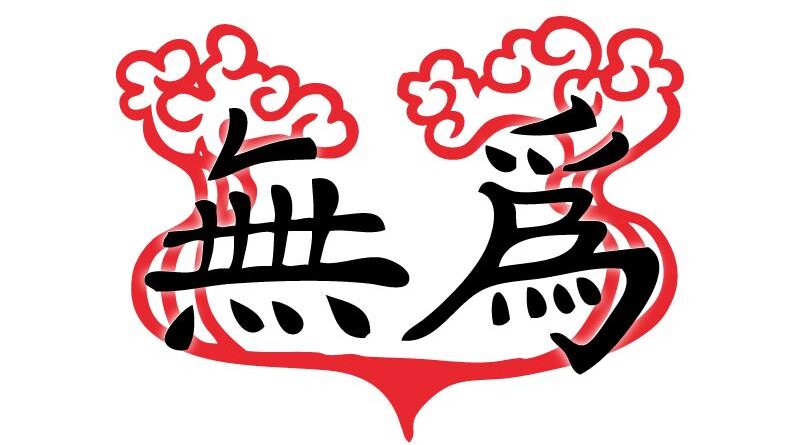
Understanding Flow – Part 2 Ancient Philosophy The embodied model of the self was the primary viewpoint during the Warring States period of China, and also other parts of Asia. But it was in China especially that we discover the embodied mind model. During the Warring States period there were numerous philosophers and sages whose names we still know today. Most notably Lao-tzu, Confucius, Mencius, and Chuang-tzu. Though their philosophies may somewhat differ, their way for understanding the mind and body was the same. Their view of human nature was mind-body holism. Their philosophies, social systems, religions, and ritual practices reflect this holistic view. From centuries of ancient Chinese people following their philosophies and rigorous training to cultivate harmonious dispositions in the self, there is no doubt according to them that human cognition is embodied. Any other model, such as mind-body dualism, was shown the contempt it deserved. If in ancient China the embodied model of the self was understood to be how humans are hardwired, then we can see why a healthy skepticism developed towards mind-body dualism and its idea of a rational agent in control of an unruly body. In the East, in general, this skepticism shown towards rationality is culturally held firm. The battle within us, then, is not between a rational agent attempting to lord it over an unruly body. But instead it is a tug of war between an allocation of function between the two systems of hot and cold cognition. In the West and modern developed world, majority of our energy is allocated towards the function of the cold system trying to control the natural hot system. But in the ancient East it is absurd to try and overemploy the cold system, especially when you consider the main driving force within us and our essential nature is within the hot system. The focus in ancient China, then, was more about ingrained skill and shaping our character because they can both be cultivated in our hot system as natural and spontaneous. Eastern thought, then, especially the ancient Chinese embodied model of the self, is an essential corrective to the way modern Western philosophy has a tendency to focus on the cold cognitive aspects of conscious thought, rationality, and willpower. As a result, the modern revolution of embodied cognition in cognitive science was inspired partially by Eastern thought, especially ancient Chinese thought. The main focus of many ancient Chinese sages and philosophers during the Warring States period was the concept wu-wei. Wu-wei literally means non-doing, non-force, and effortless action. The effortlessness of wu-wei is ultimately a state of intelligent spontaneity. And I believe intelligent spontaneity is a more accurate term than flow when we are talking about that effortless state of mind. Keep in mind though that how wu-wei is achieved differed slightly among each philosopher and sage. Chuang-tzu’s focus was on effortless skill, or in other words effortless action, which actually adapts perfectly to modern cognitive science. We can understand the effortlessness of wu-wei when we think of those times we try too hard to achieve something. When we are trying too hard to achieve an outcome we are not allowing for life to naturally happen. For example, when we put a key in a lock and try to turn the key too fast we feel resistance. To open the door you need to be loose and relaxed and when you jiggle the key ever so softly the door opens effortlessly. By not forcing you effortlessly move through the task of opening a door. The key and door analogy is not only about how expert skill is effortless, but it is also a metaphor for how we move skillfully through life. No other sage or philosopher during the Warring States period explores skill more than Chuang-tzu. The Chuang-tzu text is like a manual for cultivating skill and training spontaneity, upon a lot of other wisdom about life. And this is why Chuang-tzu synthesizes well with modern cognitive science. The skill emphasized by Chuang-tzu in the Chuang-tzu text is not only about expertise, but also life skills which are supposed to contribute to developing harmonious dispositions in the self. Chuang-tzu, on a subtle level, examines the science of skill and how to reach peak performance to the point of explaining what the actual experience is like. Chuang-tzu understood that spontaneous skill comes from the deeper, more evolutionary ancient hot system. Somehow we need to ignite the spontaneity within the hot system naturally without any effort to do so. The cold system interferes with the spontaneity of life. Even in ancient China people overly identified with the cold system which gives one this sense of being an isolated self. Chuang-tzu explains that our real nature, the authentic self, is beneath the rational cold cognition. He articulates this through skill stories that exhibit this transfer of functional allocation from the cold system back to the hot system. He uses the craftsmen as an example to explain how skill and virtues can become so much a part of us that they are instinctive and spontaneous, they are hot. One of the most famous stories in the Chuang-tzu text is about a butcher called Cook Ting (or Butcher Ding). The Cook Ting story setting is a traditional religious ceremony where an ox will be sacrificed in public for the ruler Lord Wen-hui and a large crowd of onlookers. Cook Ting is the center of attention for this religious event. This ritual of animal sacrifice demands the difficult skill of using a blade with precise timing and perfect execution. But this is not a difficult task for Cook Ting. He slices and dices the ox up so effortlessly that Lord Wen-hui is astonished. Lord Wen-hui cannot believe such a mundane skill can reach the heights of beauty similar to an artistic performance. He approaches Cook Ting to ask how he can
Understanding Flow – Part 1 Modern Science
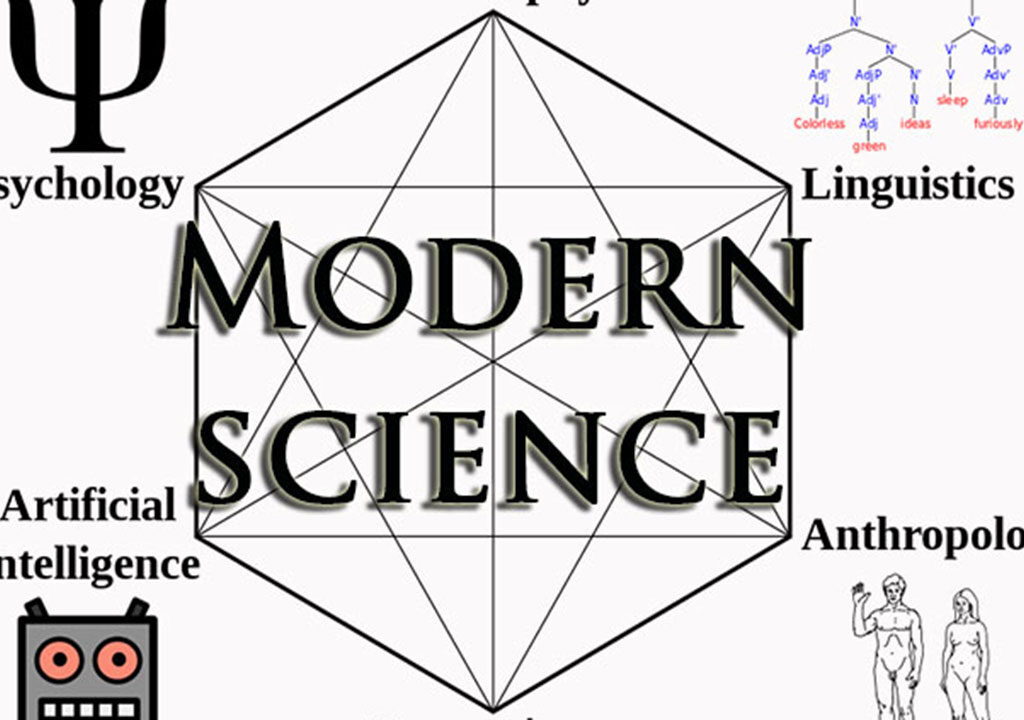
Understanding Flow – Part 1 Modern Science What is the nature of being in a flow state of consciousness? How and why do we experience flow? What truly is flow? The term flow was first coined and popularized by Mihaly Csikzentmihalyi who is a Hungarian psychologist. He wrote a fascinating book called Flow back in 1990. When we think of flow we think of an athlete, musician, writer, craftsman, or any artist when they appear to have this laser-like focus and precision which is equated with them being in the zone. But flow is a much more ancient concept going back to the Warring States period of China (475-221 BCE). Its original ancestor is known in Chinese as wu-wei, which is a concept at the heart of Taoism and martial arts. Many of us are familiar with the term flow but not with wu-wei. Understanding wu-wei and the Eastern mind it came from, is imperative for us to truly understand the depth of flow. Yet, in the modern day, our understanding of flow and how to induce it is at a novice level. The word is loosely thrown around in popular culture. We hear people proclaim that “they’re in the zone,” or more to the point “I’m in the zone” or “I’m in the flow,” which actually implies you’re not in any state of flow if you have time to speak about it. We often hear athletes state after a great performance how they felt they were in a state of flow, where all the external noise of the world was eliminated. They essentially had tunnel vision. To be highly effective at our chosen skill we need to enter a flow state of consciousness. But the problem for most of us is we have no idea how to enter a flow state. Many of us incorrectly believe this dimension of effortless skill and peak performance is a state of mind isolated to world-class performers. You need to eliminate this way of thinking and really absorb the information I am about to give you. First and foremost, cultivating skill and reaching peak performance, in other words entering a state of flow, really depends on how we understand the mind and body. This is not some new radical way of thinking. This was actually the primary focus of numerous great thinkers throughout history. It doesn’t matter whether East or West, understanding human thought and the minds function has been a central focus for as long as we can remember. We’ve always been fascinated with why cultures and traditions developed, why certain religions were born to bind community, and why someone is more skillful at a particular craft than someone else. The process of thinking and how and why we think is at the foundation of philosophy, science, religion, and art. For thousands of years, both in the East and West, there have been numerous systems for understanding the mind. Some have stuck and many have disappeared. But for as long as we can remember there has been a persistent myth pervading human civilization: mind-body dualism. This dualistic model of mind and body has become the standard template for which we study the mind and the body. As a result, it is common for us to feel this split within us, which is evident in our language and actions. This dualistic model of mind and body is the big reason we don’t understand the nature of flow. We tend to feel we are these rational minds in these completely irrational bodies. Mind-body dualism is the disembodied myth embedded in our modern thinking. This myth has led us to focus and believe firmly in an abstract rationality, where reason trumps all. So we end up believing we are these disembodied rational agents imprisoned within this meat suit we call a body. The disembodied myth is a philosophical hangover from Plato down to influential philosophers such as Descartes and Immanuel Kant. Philosophers such as these three propelled the dualistic model of mind and body along based on vague intuitions they had about a distinction between people who have minds and the physical world, which apparently doesn’t have a mind according to them. Their metaphysics led to a dualism between a disembodied mind and a physical world of things. In post-Enlightenment Europe and its colonies rational thought was portrayed as the essence of human nature. Reason became something completely disconnected from the physical world around us. Our mind, and its rationality, is thought to be superior and distinct to the body and its emotions. The disembodied myth has implanted a split within us that confuses us to no end. We have bought into the disembodied model of mind without questioning its validity. Science also has been handicapped by the disembodied model. Cognitive scientists in the mid-twentieth-century treated the human mind as a brain in a container. Many experiments were concerned with abstract information processing which led them nowhere. It wasn’t until the past few decades that cognitive science began to change its perspective. Cognitive science is slowly moving away from the disembodied dualistic model and instead is beginning to treat human thought as fundamentally embodied. Cognitive science has shown through extensive research on embodied cognition that we are not the paragons of reason we assume to be. Though, science is just catching up to this perspective. Many sages, artists, philosophers, and even athletes have questioned the overuse of rationality, as the actuality of their experience tells another story. This also might be why many artists, writers, and philosophers are usually considered as having eccentric behavior by the general public. Many sages from the East, on the other hand, are often suspicious of rational people because rational people often think too much about everything. An artist would say being overly rational destroys beauty and truth. Ask yourself what is rational about a lot of art? Or even for the
History of the Monarchical View | Book Excerpt from Enlightenment Now
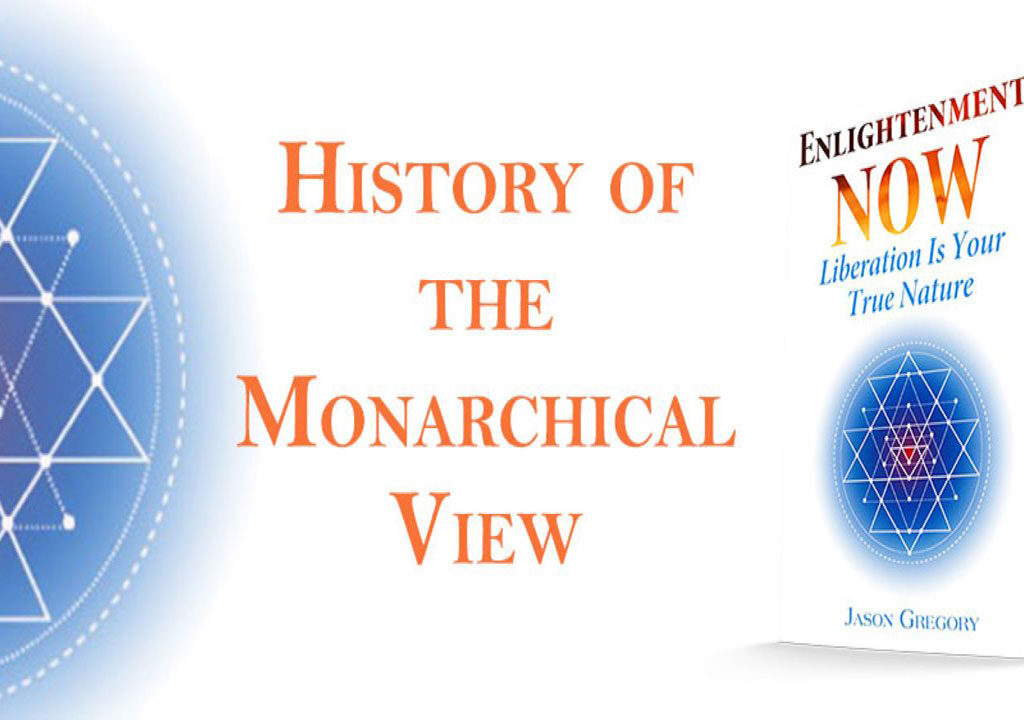
History of the Monarchical View | Book Excerpt from Enlightenment Now Tracing our history back to pre-agrarian culture, humanity was a people living in and with nature. We existed in small tribal and shamanic communities taking only the necessities of life, rather than whatever we wanted. Those archaic cultures did not have to seek equilibrium with the environment because they were already naturally harmonious. They perceived nature in all of its glory, as an extension of themselves, instead of our modern approach to nature as a separate and tyrannical lord. Material acquisitions were of no importance, as the welfare of the individual and the community were the main priorities. This is not to say that these cultures were above individual and collective folly, but the stark difference to our modern civilization is that their faults were generally addressed with an attempt to heal any problem through a consensus of opinion in a communal setting. An individual’s problem was the community’s problem and vice versa. The welfare of one was the welfare of all. In such a model, there is no individual above the others who decides what is good for the people. Even the rise of the shaman and holy person did not threaten this communal importance within tribal cultures. The shaman and holy person, though, is respected as the one who has done the internal work to possess the innate wisdom that heals others’ physical and psychological ailments. This is not to say that a shaman or a holy person necessarily held a position of authority over the community. On the contrary, in most cases the shaman and holy person was a hunter and gatherer just like anyone else, but differed in having a keen interest in medicine and healing, in much the same way that certain women of the community had a keen interest in arts and crafts. In this statement we are not suggesting that only men were shamans or holy people and that only women were interested in arts and crafts; that would be a common mistaken assumption. Within many tribal communities in ancient times the shaman and holy person, either female or male, held a place of equal importance to other members of the tribe, which is hard for us to fathom in our current era from a state of consciousness that tends to perceive reality in the mold of layers and levels of hierarchy. There were tribes in ancient times that did kill and shun shamans or holy people as outsiders. But in many cases tribal communities were based on the natural philosophy of mutuality as opposed to the modern view of individuality because individuality had not blossomed as it has in our current era. Tribal cultures are traditionally a partnership society based on mutuality and anyone in those ancient times who sought individual salvation from the group ran the risk of nature’s wrath. Those who were not mutually in sync with the other people of the tribe were viewed to disturb its harmony. Individuality, then, in those times was about how one benefited the group. Everybody had their place within the community by following what their natural God-given talents were. No one had to be assigned duties, as there was no one in the role of a dictator in the community assigning duties to others. In the Taoist philosophy of China, each and every individual has his or her own unique psychosomatic pattern that they express either physically or psychologically, which ultimately brings harmony to the world. In Chinese this unique organic pattern is known as li (理), and by following your li you naturally harmonize with the universal essence and order, Tao (道), which brings harmonic resonance into the world of form, known as ying (應) in Chinese. The ancient Taoist sages understood the natural tribal values brought down from living with nature and then into agrarian society. Invariably our li, in other words, our intrinsic human nature, is linked to art, because art in its purest form is the self-expression of one’s organic pattern. Because of this, the artistic path calls to the artist, and is not the result of personal desires and perceived pleasures. Pursuing your personal desires and pleasures within the apparently secure confines of your own physical and psychological comfort zones is no way to discover your organic pattern or freedom. This vain pursuit actually has more in common with a prison than anything else. That calling which naturally dawns upon our mind is the path of the hero, if we choose not to be distracted by what our egotistical mind is attracted to, because the ego is invariably associated to the hypnosis of laziness and procrastination. Mythologist and philosopher Joseph Campbell beautifully called following this calling “the Hero’s Journey.” He adeptly explained that if you discover your li and follow it—“following your bliss” in Campbell’s terminology—then you not only continually grow along the path of life, but you also change the world through your self-expression as it harmonizes with everything in reality, that is, ying. For example, artists often have the ying ability to bring people together, move them emotionally, and inspire others. Ironically, though, a lot of people strive to become an artist for fame or to appease their own intellectual pursuits and in both cases they usually fall short of the mark. On the other hand, successful artists in a lot of cases never intended to be famous and weren’t originally passionate about their craft, but from following the intuitive calling of li along the hero’s journey they continue to grow and become extremely passionate without any intention to do so at the outset. Establishing harmony between the individual and the community was common etiquette among many ancient natural tribal cultures. The community was an extension of the individual and so the individual is the community. The inner life of the individual becomes the culture. The microcosm and macrocosm are both one
The Way of the Warrior and Path of the Sage | Book Excerpt from The Science and Practice of Humility
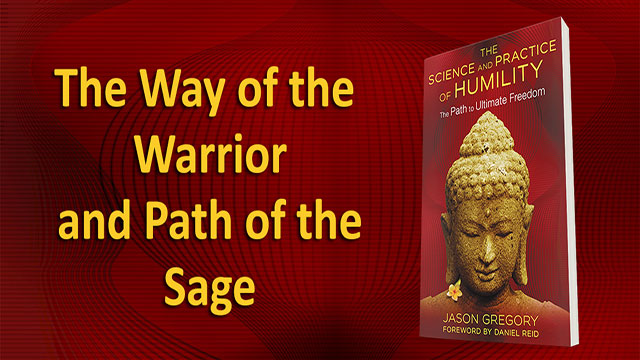
The Way of the Warrior and Path of the Sage | Book Excerpt from The Science and Practice of Humility A human has two primary states of awareness or modes of being. As we have mentioned there are those who are drawn into the daily dramas of life and those who have an elevated perspective, capable of seeing a fractal harmony within all life. These two states of awareness run parallel with the conscious state of the false ego and the true self, respectively. The ego perceives the fine details of reality. Like a microscope the ego focuses on the very tiny matters of life, then mistakenly builds its psychology around these insignificant situations. On the other hand the true self is the state of consciousness so pure that it constantly sees that life is pattern; in this state the unfolding universe can be visualized. This state of awareness is a mind of no deliberation, a mind that does not attach itself to any circumstance or thought—past, present, or future. The true self dwells within the spiritual plane and knows the soul vibrations, hence the evolution of perception. We associate this state of consciousness with a teacher of eternity or a sage, and the state of consciousness of the ego caught in the details with the masses or the profane. Both primary states of awareness are built into the universal structure. These two viewpoints have been an area of confusion throughout the ages. Yet both are necessary and together form a cosmic law. The teacher and student relationship is found in all levels of life, whether as parent and child, teacher and student, or— the most mysterious of all—master and disciple. In the immutable relationship between master and disciple, the disciple is still deluded by the mind, whereas the master knows the totality of our being. These two modes are represented in ancient scriptures and mystical stories as “the warrior” and “the sage.” Many examples of a sage teaching a warrior are found in the Vedantic treatises of India, most notably the Bhagavad Gita and Ribhu Gita (Song of Ribhu). The Bhagavad Gita tells the story of Arjuna the warrior and Krishna the sage, while the Ribhu Gita refers to Nidagha the warrior and Ribhu the sage. In both classics the warrior is suffering from his own mind and plight within this world. As he begins to question his mind, the guidance of the sage appears. In both scriptures the whole process is to lift the warrior’s mode of perception out of the details of life into the vision of the Divine. In the Bhagavad Gita Krishna attempts to move Arjuna’s awareness out of the daily mundane struggles of life into the vision of Brahman, which is to see the infinite in all things. Verses 31, 32, and 33 of chapter 13 of the Bhagavad Gita state: When a sensible man ceases to see differentidentities due to different material bodies andhe sees how beings are expanded everywhere,he attains to the Brahman conception. Those with the vision of eternity can seethat the imperishable soul is transcendental,eternal, and beyond the modes of nature.Despite contact with the material body,O Arjuna, the soul neither does anything noris entangled. The sky, due to its subtle nature, does not mixwith anything, although it is all-pervading.Similarly, the soul situated in Brahman visiondoes not mix with the body, though situated inthat body.1 This is only one of many ways to interpret these scriptures, but this way of understanding the relationship between the warrior and sage is imperative to the practice of the science of humility. These two modes of being correspond to the flow of chaos (warrior) and order (sage) within consciousness. One of the biggest problems to plague this planet throughout time has been the fostering of the warrior’s consciousness and the continual suppression of the sage’s consciousness. It comes back to the individual, so there is no one to blame for this other than ourselves. Our obstinate refusal to look within ourselves to find the true problems in our world has allowed us to further justify our own habitual ways that are slowly killing the human species. For us to ward off this fate, we need to understand where our awareness is rooted. To do this we need to explore the characteristics of a warrior and a sage. THE WARRIOR The warrior is an ephemeral state of awareness that gets swept up in trying to change the world. To achieve this implied change, warriors attempt to impose their will on others. In the belief they are striving for world peace, they cause more trauma. The warrior does not know that fighting for a solution only increases a problem. Why do we fight? Here “fight,” means to have conflict or oppose some situation either within or without. One of the major dilemmas of the human psyche is having the notion that something is either good or bad. When an individual judges if something is good or bad, it comes back to the false psychological state known as the ego: humans judge if something is good or bad according to their own conditioning from birth. Not being conscious of this, warriors seek to change the world according to their likes and dislikes. So a warrior does not truly want to bring peace to the world because he is in fact conspiring against it. The majority of beings on Earth have a warrior’s consciousness, which is evident in the chaos of the physical and mental worlds. Those who believe that what is right for them is the way for everybody else are not truly concerned about another being’s authentic way of life. A warrior harbors an artificial internal conspiracy, that of believing that we are our thoughts and our accumulated conditioning. Buying into the grand delusion of conditioning fragments reality into chaos and separation. The warrior knows the chattering within the mind but is ignorant of
The Skill of Martial Arts is Yin Over Yang | Book Excerpt from Effortless Living
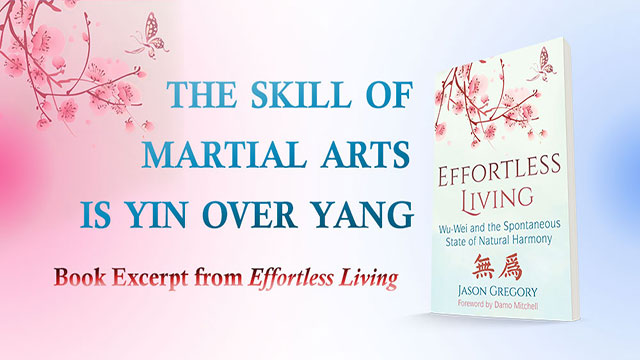
The Skill of Martial Arts is Yin Over Yang | Book Excerpt from Effortless Living The science and practice of martial arts are based to some degree on the science of traditional Chinese medicine (TCM). This is evident in the fact that TCM focuses on how our body is a miniature inner universe. When we know and understand this inner universe, we begin to know the greater, outer universe and see how both function the same. Martial arts make use of this idea through movement methods that are supposed to open up the meridian channels of the body. This allows qi to flow freely, so that the mind and body are in harmony with the effortlessness of the heavens. This experiential knowledge attained by martial artists is supposed to transfer over into daily life, as it did with Thor Heyerdahl. Trust, then, is at the heart of martial arts, as they are based on the fundamental Taoist philosophy of wu-wei. The problem with martial arts is, as I have mentioned, that they have been infected with the cultural tendency toward doing, which becomes an intellectual game of striving for a so-called goal. Our whole world is invested in the energy of yang at the expense of yin. Our modern habits of doing, control, and force are deeply entrenched in both spiritually oriented and combat-oriented martial arts. And yet the core of both methods is the same, as martial arts are about transforming your character to reveal your true nature. This is the spiritual heart of martial arts, but it has been misinterpreted by Westerners and also by numerous people in the East. Many people think that the spiritual transformation in martial arts is about attaining powers or experiencing some altered state of consciousness similar to a psychedelic experience. This way of thinking is the “amateur spirituality” to which Chuang-tzu alluded. Amateur spirituality is the attraction to peacock consciousness, meaning that people still have the yang habit of showing off or telling other people about how peaceful and lucid their state of mind is. The irony of peacock consciousness is you find these people always talking about themselves, to the point where the listener feels ill and exhausted. This is especially true for those people trying to attain supernatural powers, called siddhis in Sanskrit. Such proclamations prove that no real transformation has occurred. All that has occurred is that one has become a well-trained show pony. This show-pony attitude is yang-oriented and has nothing to do with the basis of martial arts. As a result martial arts in the modern world are based on the perpetual activity of yang and failing to embrace the nondoing of yin. We discover this yang-over-yin temperament in the sport of mixed martial arts (MMA), which is best-known through the organization of the Ultimate Fighting Championship (UFC). The athletes of MMA are well-trained; many of them function at a rate of peak performance, which can be quite a spectacle to watch. But the problem is that many mixed martial artists and spectators believe martial arts are about talking trash and beating the hell out of the opponent. Though this may be entertaining for the spectator, we should not delude ourselves into thinking this has anything to do with martial arts. Rather it is just martial arts on steroids, polluted with the idea of yang over yin, doing over non-doing. This attitude inclines one toward competition because of its innate characteristics of force and control. If mixed martial artists, or any combat sport athletes, for that matter, were serious about martial arts, they would need to understand and embrace the essential tenet of cooperation. Cooperation in martial arts is evident in the internal practice of pushing hands, known as tui shou in Chinese. In the practice of pushing hands, each person is feeling and moving according to the energy of the opposing person. Pushing hands works to undo our natural instinct to resist force with force by teaching the body to yield to force and redirect it. Force does not exist in this practice, because in feeling and moving according to the energy of the other person, we are accessing our receptive yin nature. Yin evokes the art of cooperation. Although it may appear that pushing hands is a form of competition, it instead is a dance, as you essentially need two to tango. Even so, pushing hands, like many other aspects of martial arts, has succumbed to the tendency toward the yang characteristics of competition and peacock consciousness. In both spiritually oriented and combat-oriented martial arts and MMA, the yin art of cooperation is at the core of all forms of cultivation. For example, if a mixed martial artist is trained properly, he or she will know that there is no opponent other than himself or herself. You are essentially testing yourself against your so-called opponent. The only opponent is yourself, and your perceived opponent is a mirror of where you are in your training. The mirror of the opponent reflects back to you your spiritual development as well as aspects of your character that have not been transformed or cleansed out of your psyche. So no matter what form of martial arts we are talking about—including MMA—the essential heart of the art is to blunt your sharpness. Blunting the sharpness is a phrase used by Lao-tzu in the Tao Te Ching to describe the softening of one’s rigid personality. In martial arts, it is about evoking the yin qualities of humility, compassion, forgiveness, respect, and honor. For thousands of years, martial arts have been mistakenly seen as practices to cultivate the yang, masculine characteristics of power, force, and control. This incorrect perspective has only increased our tendencies toward competition and trying to stand out in the crowd. Martial arts are not based on yang over yin but on yin over yang. They are a practice that mimics life, as the majority of
Harmony of Nonconformity | Book Excerpt from Effortless Living
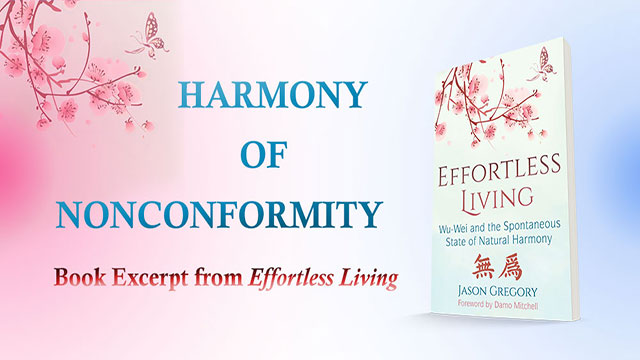
Harmony of Nonconformity | Book Excerpt from Effortless Living In a linear world, the external order dictates an artificial way of life to the individual, creating a conformist society and forcing us to relinquish our power to a machine that is unnatural and devoid of life. This passive conformity can be traced back to the origins of the Vedic Hindu caste system and the feudal system under medieval Western Christianity. When a settled agrarian culture such as these is born, it tends to build towns, not only to protect people from outside influences, but also to develop a mental framework based on rules and regulations. The complexity of agrarian culture leads to a division of labor and a division of function. From this division, the ancient Hindus (the Vedic civilization of Dravidians and Aryans) developed a caste system. The Hindu caste system is made up of the Brahmins (priesthood), Kshatriyas (nobility), Vaishyas (merchants and farmers), and the Shudras (laborers). A direct parallel to the Hindu caste system can be found in medieval Christian society, where we see the priesthood and the church, feudal lords and nobility, farmers and merchants of the commons, and the serfs. Although we no longer have a caste system, this underlying pattern is still with us today. When we are born into this world, we come out of our mother’s womb (nature) and are taught to submit to the rules of society and culture according to our socioeconomic status. This is the crucifixion of the individual; it is the sacrifice we all make. According to the tyranny of the machine, this crucifixion is for the “common good” or “greater good.” But there is a stark difference between the Hindu and Christian societies of ancient times. First of all, the function of the Vedic caste system was an act of surrender to Brahman (ultimate reality/godhead). Individuals would crucify their egos and their desires in favor of the lives they had been given by nature. This means they would not seek another path or to try and control their lives according to their interests. Instead they would abide by the order of society, which helped them diminish their egos so that they could feel the presence of Brahman within themselves. This is dharma as social duty. The second difference is that, once Hindus have fulfilled their social duties in this life, they are allowed to break away from caste and become renunciate sages in the forest, a practice and title known as vanaprastha in Sanskrit. (This possibility is loathed by Christian society, because one is thought of as useless if one does not contribute to the social order.) This breakaway from caste is viewed as a return back to nature and could be thought of as a resurrection. A sage is not part of society and does not conform to its rule. Jesus was a sage in this mold. This is why he was not thought of as a particularly good member of society and he was actually put to death (if we take the story of Jesus to be real). Those who submit invariably lose their natural innocence. Conformity is the result of force. When individuals are forced by society and culture into life situations that are against their will, they give away their natural sovereignty in exchange for comfort and servitude and are psychologically reduced to sheep. We have developed this sheeplike behavior as a result of the belief that the morals and ethics forced upon us by society are avenues to success and freedom. But this notion is absurd inasmuch as the success and freedom of our world are unnatural. These goals are gauged only by finances. But obviously this is not true success or freedom, as money is empty and void of meaning, and it provides no happiness other than that of acquisition. Happiness cannot be contained in anything that we need to force to happen. As human life is forced into a sheeplike way of being, happiness is reduced to momentary stimulants of excitement. In such a life we can never express our natural divinity, li, because we are following the model of someone else’s idea of life. Yet conforming to anything other than one’s own innate world destroys us physically, mentally, and spiritually, as te, the virtue of Tao, cannot come through the organic pattern of the individual, li. Anxiety, depression, and stress are so prevalent in this day and age partly because we are forced to live such lives. Wars and social unrest then reflect the individual’s anxiety. Liberated individuals are in alignment with their own nature and with the Tao. They do not benefit the accepted social order and are regarded as useless in the eyes of institutional and organizational power. Lao-tzu and Chuang-tzu were treated this way, because they could see the unnaturalness of an artificial society. The Buddha and Jesus of Nazareth were two other such sages who could see through the hypnotic veil. A liberated sage understands that anyone who continues to act out the unnatural patterns of conditioning is contributing to chaos and destruction, either consciously or unconsciously. One who is liberated, on the other hand, begins the yoking process until a crystal-clear perception of the Tao in reality can be experienced. In Richard Wilhelm’s translation of the I Ching, he states: Not every man has an obligation to mingle in the affairs of the world. There are some who are developed to such a degree that they are justified in letting the world go its own way and in refusing to enter public life with a view of reforming it. But this does not imply a right to remain idle or to sit back and merely criticize. Such withdrawal is justified only when we strive to realize in ourselves the higher aims of mankind. For although the sage remains distant from the turmoil of daily life, he creates incomparable human
